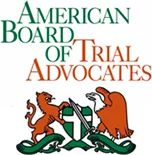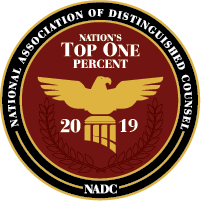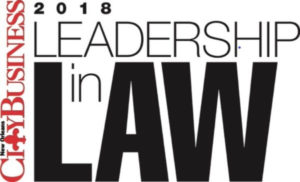“What Law Applies to Offshore Indemnity Contracts?” This is the title of Richard Martin’s latest published maritime article for the Louisiana Association for Justice publication, Louisiana Advocates.
LLF is a leader in maritime and offshore law. Our firm was named Admiralty Law Firm of the Year in Louisiana by Global Law Experts. Frank and Richard have a combined 70 years’ experience representing maritime and offshore workers. Here’s the article:
WHAT LAW APPLIES TO OFFSHORE INDEMNITY CONTRACTS?
by Richard M. Martin, Jr.
From time to time, a maritime lawsuit features both a Jones Act drilling vessel owner defendant and an offshore service contractor who is a general maritime law negligence defendant. The vessel owner and the service company usually have separate contractual relationships to the oilfield operator. Typically, the operator’s agreement with the service company contains an indemnity provision where the operator agrees to indemnify and hold harmless the service company from claims for bodily injury brought by other contractors’ employees. This issue arises when the Jones Act plaintiff sues both the vessel owner and a service company, and the defendants file cross-motions for summary judgment on the issue of contractual indemnity and defense.
If the Outer Continental Shelf Lands Act1 applies, the law of the adjacent state (i.e., Louisiana) is adopted.2 That includes the Louisiana Oilfield Indemnity Act,3 which voids certain indemnity and defense agreements.4 However, even if OCSLA applies, the court must still determine whether federal maritime law applies of its own force. If it does, those indemnity portions of the contract are governed by federal maritime law, and they are enforceable.
OCSLA was passed in1953, to “amend the Submerged Lands Act in order that the area in the Outer Continental Shelf beyond boundaries of the States may be leased and developed by the Federal Government.”5 OCSLA is applicable to “activities on drilling ships, semi-submersible drilling ships, and other watercraft, when they are connected to the seabed by drill strings, pipes, or other appurtenances, on the OCS for exploration, development, and production.”6 In furtherance of this purpose, Congress amended OCSLA in 1978 so that §1333(a)(1) now provides:
“The Constitution and laws and civil and political jurisdiction of the United States are extended to the subsoil and seabed of the Outer Continental Shelf and to all artificial islands, and all installations and other devices permanently or temporarily attached to the seabed …” (Emphasis added)
So, how does a court determine whether the LOIA or federal maritime law applies to a defense and indemnity agreement? In Union Texas Petroleum Corp. V. PLT Engineering, Inc.7, the Fifth Circuit answered this question. For OCSLA to apply, the controversy must:
1. Arise on a situs governed by OCSLA (i.e., the subsoil, seabed, or artificial structures permanently or temporarily attached thereto);
2. Federal maritime law must not apply of its own force (i.e., the contract must not be maritime in nature); and
3. The state law to be adopted under OCSLA must not be contrary to existing federal law.
To determine the “situs” of the controversy as required by PLT, the courts apply a “focus of the contract” test. Grand Isle Shipyard, Inc. v. Seacor Marine, LLC.8 “A contractual indemnity claim arises on an OCSLA situs if a majority of the performance called for under the contract is to be performed on stationary platforms or other OCSLA situs enumerated in 43 U.S.C. § 1333(a)(2)(A).”9 Obviously, the majority of work called for in drilling contracts is performed while drilling vessels are “temporarily attached” to the seabed.10 This can make a vessel an OCSLA situs when it is performing drilling-related activities.11
In Davis & Sons, Inc. v. Gulf Oil Corp.,12 the Fifth Circuit provided a two-part inquiry to determine whether a contract is maritime in nature. This process entails an examination of the historical treatment in the jurisprudence and a six factor fact specific inquiry. In some cases, the historical treatment of a particular contact and scenario is “clear enough” to make the second part of the test unimportant. Demette v. Falcon Drilling Co.13 Otherwise, the six Davis factors used to determine whether a contract is maritime are as follows:
1. What does the specific work order in effect at the time of the injury provide?
2. What work did the crew assigned under the work order actually do?
3. Was the crew assigned to work aboard a vessel in navigable waters?
4. To what extent did the work being done relate to the mission of the vessel?
5. What was the principal work of the injured worker?
6. What work was the injured worker actually doing at the time of his injury?
Generally, resolution of the issue is straightforward because “a specialty services contract related to oil and gas exploration takes on a salty flavor when performance of the contract is more than incidentally related to the execution of the vessel’s mission.” Energy XXI, GoM, LLC v. New Tech Engineering, LP;14 Demette15; Campbell v. Sonat Offshore Drilling, Inc. 16; Theriot v. Bay Drilling Corp. 17; and Corbitt v. Diamond M. Drilling Co.18 Moreover, it is established Fifth Circuit law that a contract for offshore drilling work is a maritime contract. Transcontinental Gas Pipeline Corp. v. Mobile Drilling Barge.19 Because the provision of services which contributes to the mission of a special purpose vessel is “inextricably intertwined with maritime activities since it required the use of the vessel and its crew,” and the indemnity contract relates to that maritime activity, federal maritime law will apply and the indemnity agreement will be upheld. Campbell20; and Bobby Clay v. ENSCO Offshore Company.21
1 43 U.S.C. § 1331, et seq. (“OCLSA”)
2 OCSLA’S purpose was “to define a body of law applicable to the seabed, the subsoil, and the
fixed structures … on the Outer Continental Shelf.” Rodrigue v. Aetna casualty & Surety Co., 395 U.S
352, 355 (1969). Ultimately, the Supreme Court determined that federal law and not general maritime
law should apply to “fixed structures.” Id. At 363.
3 La. R.S. 9:2780, et seq. (“LOIA”)
4 La. R.S. 9:2780 A provides:
“The legislature finds that an inequity is foisted on certain contractors and their
employees by the defense or indemnity provisions, either or both, contained in some
agreements pertaining to wells for oil, gas, or water, or drilling for minerals which occur
in a solid, liquid, gaseous, or other state, to the extent those provisions apply to death or
bodily injury to persons. It is the intent of the legislature by this Section to declare null
and void and against public policy of the state of Louisiana any provision in any
agreement which requires defense and/or indemnification, for death or bodily injury to
persons, where there is negligence or fault (strict liability) on the part of the indemnitee,
or an agent or employee of the indemnitee, or an independent contractor who is directly
responsible to the indemnitee.”
5 H.R. REP. No. 83-413 (1953).
6 H.R. REP. No. 95-590, at 128 (1977).
7 895 F.2d 1043 (5th Cir. 1990).
8 589 F.3d 778, 787 (5th Cir. 2009).
9 Id. at 784.
10 Do not confuse a “temporarily attached” vessel (i.e., a semi-submersible, a “jack-up” rig, or
a drill ship) with a floating spar platform. A spar platform is not a “vessel.” Fields v. Pool Offshore,
182 F.3d 353 (5th Cir. 1999). Thus, a spar is virtually always an OCSLA situs.
11 See, e.g., United States v. Kalazua, 2013 WL 6490341, at *17 (E.D. La. 2013), aff’d in part,
780 F.3d 647 (5th Cir. 2015) which held that “the Deepwater Horizon [a semi-submersible drilling rig]
when connected and attached to the OCS through its drilling mechanisms and is performing exploration
and production of mineral resources, is ‘erected’ on the OCS for the purposes of Section 1333(a)(1).”
12 919 F.2d 313, 316 (5th Cir. 1990).
13 280 F.3d 492, 500 (5th Cir. 2002).
14 787 F. Supp.2d 590, 601 (S.D. Tex. 2011).
15 280 F.3d 492, 500 (5th Cir. 2002).
16 979 F.2d 1115, 1124-24 (5th Cir. 1992).
17 783 F.2d 527, 538 (5th Cir. 1986).
18 654 F.2d 329, 332 (5th Cir. 1981).
19 424 F.2d 684, 691 (5th Cir. 1970), cert. denied, 400 U.S. 832 (1970).
20 979 F.2d at 1123.
21 No. 14-2508 “L”(3) (E.D. KLa.), Order & Reasons 11/18/15 (Rec. Doc. 82).









